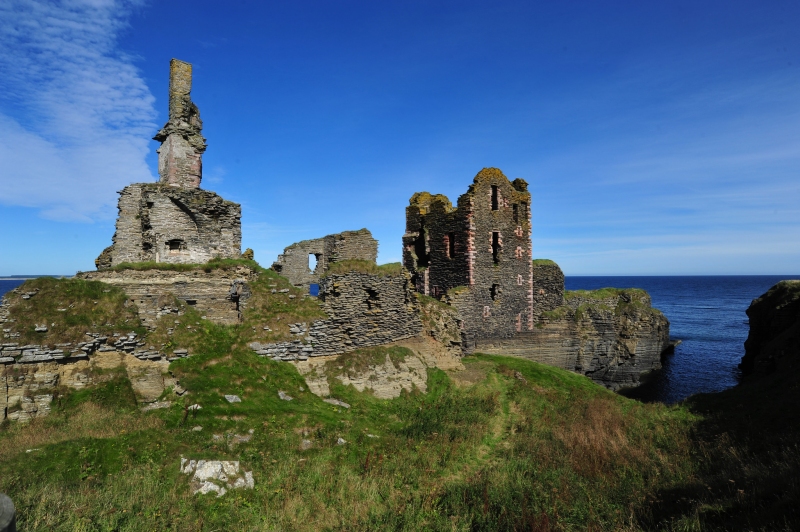
Motto: Commit thy work to God
Historic Seat: Castle Sinclair
District: Caithness, Orkney
Associated Surnames: Caird, Clyne, Linklater, Lyall, Mason
Associated Tartans:
Early Sinclair Genealogy and History:
(Excerpt from "The Scottish Clans and Their Tartans", James Grant, 1906)
The Clan Sinclair, it has been maintained, are not strictly speaking, a Celtic clan, the surname being originally of French origin. William son of the Comte de Saint Clair, a relation of the Conqueror of England, came over with him in 1066, and soon after settling in Scotland, became progenitor of all that name in the kingdom; and many charters granted by Robert I to William de Sancte Clair of the Roslin family are recorded in Robertson's Index.
William Sinclair, Earl of Orkney, son and heir of Henry, Earl of Orkney, by Ægidia, daughter of William Douglas, Lord of Nithsdale, and the Princess Ægidia daughter of Robert II, founded the collegiate church of Roslin, near his castle there, in 1441. He was Lord High Treasurer of Scotland in 1445 and Ambassador to England, on his return from which, in 1456, he was made Earl of Caithness. He married Lady Margaret, daughter of Archibald, Earl of Douglas, Duke of Ronraine and Marshal of France, who was slain at Verneuil in 1424. He died before 1480, and was succeeded by his son, William, second Earl of Caithness, who was slain at Flodden,1 with a great number of his clan.
John Sincalir, third Earl of Caithness, was killed during an insurrection in Orkney in 1529. His son George, fourth Earl, was one of the peers who sat on the trial of the Earl of Bothwell in 1568.
He died at an advanced age in 1583, leaving by his countess, Elizabeth, of the House of Montrose, John, Master of Caithness; Goerge, who was ancestor of the Sinclairs of Mey; and three daughters.
John, the Master, left sons, who were ancestors of the Sinclairs of Murkle and Ratter, and dying before his father in 1577, was succeeded by his eldest son George, fifth Earl of Caithness, who lived to a great age, and died in 1643.
George, sixth Earl, had no children; and finding himself very deeply in debt, he executed a disposition to Sir John Campbell of Glenorchy, his chief creditor, of his titles and property in 1672. On his death in 1676, Sir John assumed, illegally, the title of Earl of Caithness; but George Sinclair of Keiss was not disposed to submit to this alienation of his rights, and took possession of the property, and asserted himself as Earl of Caithness.
Glenorchy raised his clan, and marching into Caithness, obtained a victory over the Sinclairs, near Wick. He placed garrisons in the country to secure it; but Keiss prosecuted his claims in Parliament at Edinburgh. Campbell had to relinquish his schemes, and to pacify him was created Earl of Breadalbane.
George, seventh Earl of Caithness, died without issue in 1698, and his honours devolved on John Sinclair of Murkle, next heir male, and lineally descended from Sir James of Murkle, second son of John, Master of Sinclair, whose eldest son succeeded him in the estate of Murkle, while his second, Francis, entered the Swedish army and obtained high rank.
John, eighth Earl, married a daughter of the Earl of Hyndford, and died in 1705. His successors are shown in the Peerage. Besides the Francis Sinclair above named, four others of the clan attained rank in the army of Gustavus Adolphus2 - John Sinclair (brother of Caithness), Lieutenant-Colonel of Monro's regiment, killed at Newmarke; David Sinclair, Colonel of Horse; and George Sinclair of the Sinclair regiment, massacred at Kingellan in 1612.
Among the many cadets of this family are the Sinclairs, Baronets of Ulbster. In 1603 George, Earl of Caithness, made a disposition to his cousin, Patrick Sinclair, of the lands of Ulbster, and his brother John succeeded, from whom the present Baronet is descended. The Right Hon. Sir John of Ulbster in 1794 raised a Fencible Regiment, and he was the first who extended the services of these troops beyond Scotland.
Henry Sinclair (or St. Clair) of Dysert and Ravenscraig was raised to the Peerage as Lord Sinclair in 1488, and was the first of the peers of that line. The Sinclairs of Herdmanston were another branch of the Sinclairs of Orkney, dating back to the days of William the Lion in 1163.
The Sinclairs, Baronets of Stevenston, are a branch of the Sinclairs of Roslin. The Sinclairs of Longformacus were created Baronets in 1604. The first was an advocate. His son married Jean, daughter and heiress of Sir John Towers of Inverleith, an ancient family long connected with the city of Edinburgh.
Among those who figured in Sweden was Major Sinclair, on whose tomb the King of that country caused the following inscription to be carved: – Here lies Major Malcolm Sinclair, a good and faithful subject of the kingdom of Sweden, born 1691, son of the most worthy Major-General Sinclair and Madame Hamilton. Prisoner of War in Siberia 1709 to 1722. Charged with affairs of State, he was assassinated at Naumburg in Silesia, 17th June 1739.
(End excerpt)
Next page: Clan Skene
Footnotes:
1 The Battle of Flodden (1513): The Battle of Flodden Field was fought on 9 September 1513, in Northumberland England between an army of Scots under King James IV and an English army commanded by the Earl of Surrey. Read more about the Battle of Flodden at Wikipedia.
2 Gustavus Adolphus: Gustav II Adolph, King of Sweden. Several Scottish brigades, who had been levied by King James VI, were under the military command of Sweden during the Thirty Years War. Read more about Scotland and the Thirty Years' War at Wikipedia.
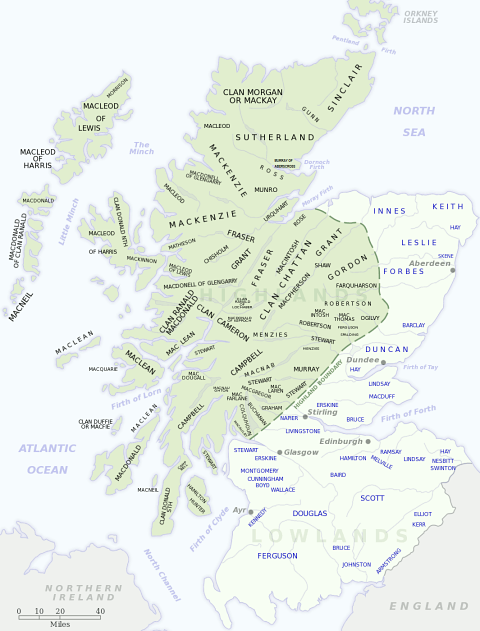
Distribution of Scottish clans and families
View larger map at Wikimedia Commons
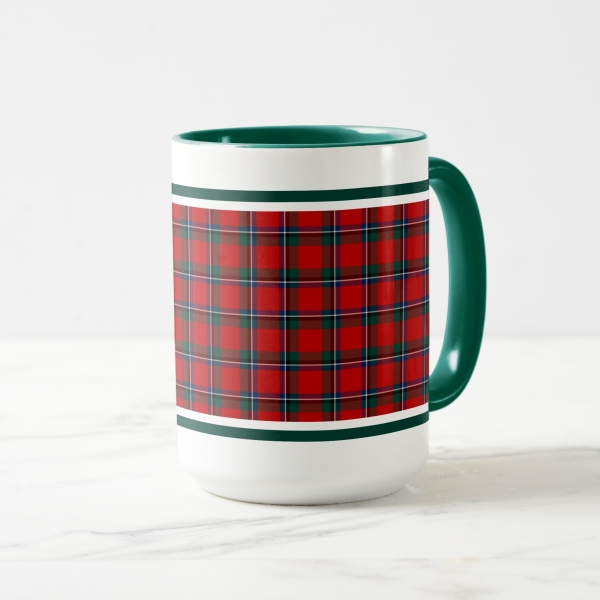
Browse the Clan Sinclair Tartan Collection with home decor, personal accessories, crafting, paper products, and more.
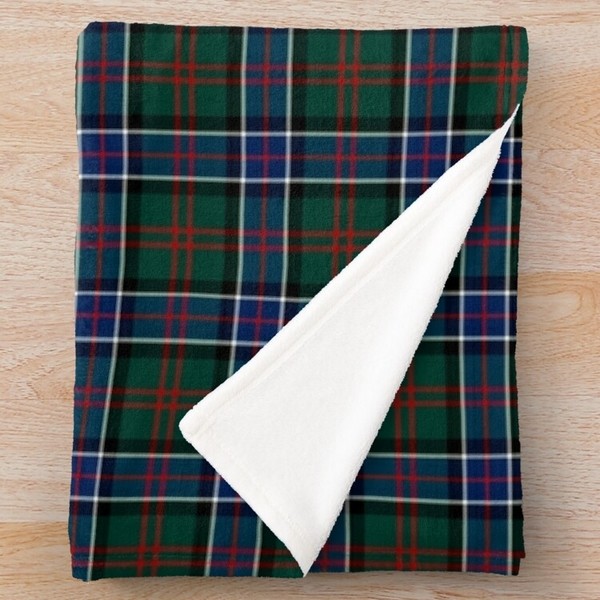
Browse the Clan Sinclair Hunting Tartan Collection with clothing, home decor, accessories, electronics cases, and more.
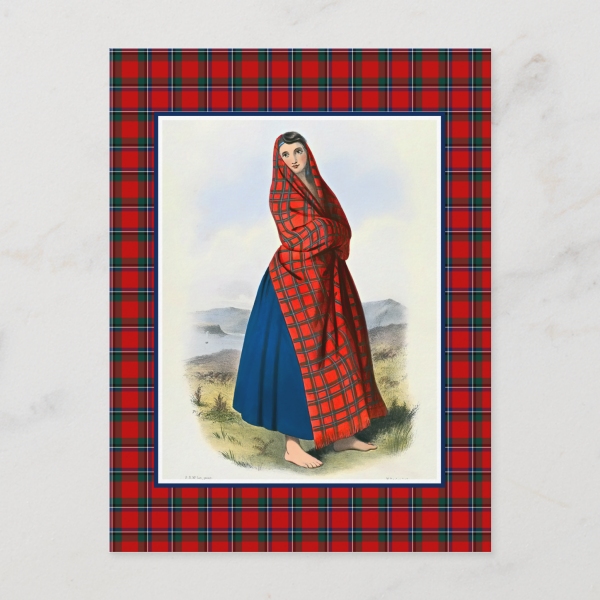
Clan Sinclair Postcard: Digitally cleaned and enhanced vintage illustration with tartan border.